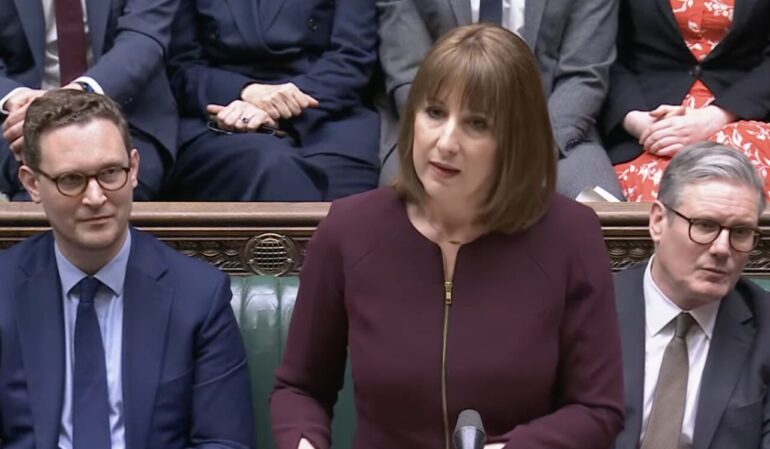More money to fund more new homes can present a great opportunity – brokers specialising in development finance and bridging loans are in for a big boost over the next four years.
This week’s Spring Statement and the Office for Budget Responsibility’s accompanying economic and fiscal outlook paint a very positive picture for the UK’s residential property market.
The Chancellor Rachel Reeves claimed the planning reforms delivered at the end of 2024 would see housebuilding reach a 40-year high, based on new estimates from the Office for Budget Responsibility.
The OBR said the revised National Planning Policy Framework reforms could boost housebuilding by 170,000 in total over the next five years.
This would result in 1.3 million cumulative UK-wide net additions to the housing stock by 2030, a 16 per cent increase and forty-year high of 305,000 per year.
To build at this rate requires two things: money to fund development and enough skilled construction workers to get these homes built.
Will it work?
Over the past 25 years, no government has managed to exceed even 250,000 net additional dwellings in one year.
This government’s plan promises 300,000 net new additional dwellings. If it succeeds, it will be the first in a quarter of a century to do so.
It is worth noting that the OBR put an explicit caveat on its upbeat forecast, saying “there are several significant uncertainties around this estimate”.
They warned capacity constraints in the housebuilding sector “could prove more binding than assumed”.
Never say never, but the announcement of a £625million investment in construction skills, designed to train up 60,000 additional skilled workers across the UK may alleviate that concern.
This is crucial for addressing labour shortages in the sector and ensuring that development projects can proceed without delays caused by workforce constraints.
Is the funding available?
Short answer, yes. Investors’ appetite to fund UK lending backed by residential property is sky-high. In fact, there is possibly even more appetite to fund than there are deals to finance.
With key reforms to modernise Green Belt development policy and the reintroduction of mandatory housing targets for local authorities, deal flow has the potential to see a meaningful uptick.
It is not just the big housebuilders which will have to deliver these new homes – there is considerable slack for small and medium-sized developers to boost their contribution too.
Investment appetite for UK residential property
The OBR’s forecasts reflect this, with the independent assessor estimating that residential investment will pick up over the next several years, with growth hitting 8.8 per cent by 2027.
That’s a big slice of funding that brokers in the development and refurbishment sectors will have access to via specialist lenders like ourselves.
House prices, monetary policy and exit funding
Whether you’re looking at a development deal or a shorter-term refurb project, the key to understanding if it’s a goer is the exit.
A report published in October last year by the National Housing Federation, Home Builders Federation and Savills highlighted exactly this while cautioning that the government may struggle to hit its 1.5 million new homes target.
The report said: “Whilst the ambitious planning reforms announced by the government are vital in increasing the number of plots available to build on, the number of new homes built will still be determined by local demand to buy those homes, particularly in the five years of this Parliament.
“The state of the housing market limits this demand – high interest rates, high house prices, and fewer mortgages available to first time buyers are barriers to purchasing homes on the private market.”
We think this is a pretty downbeat view – monetary policy is loosening, with further base rate cuts expected this year. Purchase activity is set to pick up too. The OBR forecasts a rise in the number of property transactions from around 290,000 a quarter at the end of 2024 to around 370,000 a quarter by 2029.
The increase reflects the expected monetary policy loosening over this period and reforms to the planning system, which they expect to boost the level of residential investment by 10 per cent at the end of the forecast.
What it means for brokers
It’s good news. For brokers working with developers, this reform will likely create a growing demand for development finance solutions.
We expect to see increased demand for bridging loans and other short-term finance products to facilitate quicker transactions, enabling developers to meet market demand efficiently.
It also signals the need for more flexible and strategic financing options. At Pluto Finance, we are committed to supporting brokers and developers through these transformative changes, offering flexible, reliable and bespoke financing solutions that help bring these ambitious plans to life.
As the housing market evolves, we remain a key partner in ensuring that projects are completed on time, within budget, and to the highest standard. We encourage brokers and developers to get in touch with us for expert advice and the funding solutions necessary to navigate the dynamic property market ahead.
Mario Ioannides is a partner at Pluto Finance



